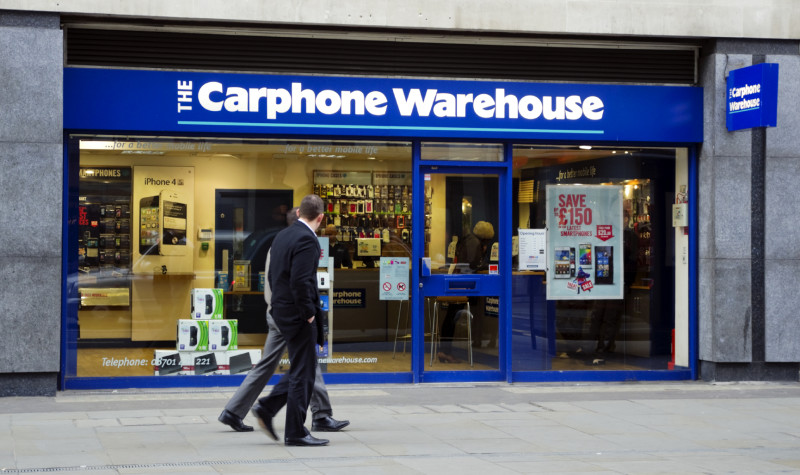Dixons Carphone: High Enough after Brexit?

Dixon Carphone, at 335p last seen, after the results. The dividend yield is not high enough. In my opinion, this share is not for chasing at this stage. There are better targets amongst UK equities that are more international.
Dixon Carphone results emerged in the cold dawn of the UK’s new Brexit world. They were good but the share price is still 21 per cent below where it was on the eve of the fateful referendum vote.
Before digging into the results, we need to remind ourselves that Dixons Carphone is a company with business in both the UK and the EU. The EU markets are the Republic of Ireland, the Nordic countries and Southern Europe. Its new chief executive is clearly proud of these results but had little to say on the Brexit situation in the statement. Because of its interest I quote it here:
“Finally, the nation has spoken and there has been a vote to exit the EU in due course. As you can imagine, we have been giving some thought to this. Our view is that, as the strongest player in our market and despite the volatility that is the inevitable consequence of such change, we expect to find opportunities for additional growth and further consolidate our position as the leader in the UK market.”
Elsewhere, he is reported in the press as saying that “access to the single market is really, really critical.” He adopted a bullish tone saying that the company had seen no sign of weakening sale since last “Fateful” Friday and stressed the qualities of the Dixon Carphone team which he described as doing well in turbulent times. The question is how much of this is confidence and how much reliable analysis?
The preliminary results…
But first, the preliminary results. In summary, Group ‘like for like’ sales for the twelve months to 30th April rose 5 per cent. Good in anybody’s language. Total net profit under the statutory requirements of company accounting rose 65 per cent from £97 million the previous year to a whopping £161 million. That correctly includes one-off losses from discontinued business as part of the restricting following the merger.
Cash flow…
In the cash flow department, free cash flow was reported to be £202 million – a giant of an improvement from the corresponding £89 million the year before. That, incidentally, is well in excess of the operating cash flow figure of £46 million in the accounts of the previous year (nowhere near enough covering that year’s cost of investment and dividend payment, which together totalled £218 million). So, on the crucial cash generation front, management has made outstanding progress. It helped in raising the final dividend (6.5p) by over 8 per cent and the total annual dividend by near 15 per cent to 9.75p.
UK, Ireland plus Nordics are the largest contributors…
For your information, the UK and Ireland is the biggest market, contributing two thirds of total sales revenue and 78 per cent of Group trading profit. Next, in order of size of contribution, comes the Nordic region, which contributed 27 per cent of Group sales and 17 per cent of Group trading profit. Southern Europe and International are very small: the former accounts for only 6 per cent of sales and 3.5 per cent of trading profit whilst the latter contributes less than 2 per cent of sales and trading profit.
Sales and trading performance by region…
Breaking down the Group’s performance last year by regional market the UK and Ireland saw actual money sales revenue increase by 2 per cent and ‘like for like’ sales rise by 6 per cent. On the company’s own measure of profit from trading, the results show that in the UK and Ireland it rose by 19.6 per cent to £365 million. In the Nordic region sales increased by 6 per cent and like for like sales increased 4 per cent. However, trading profit was down by 8 per cent in Scandinavia. Southern Europe recorded a 5 per cent drop in sales but within that, like for like sales increased 4 per cent and trading profit rose 23 per cent.
The company’s bullishness…
Dixons Carphone’s optimism about trading successfully, whatever the markets throw its way, is clearly based on two things: more subjectively, perhaps, the quality of its management; more objectively, the fact that this company, following the merger, dominates its markets by operating scale and critical mass. The implication of which, as stated by its CEO, means that in contracting markets it will squeeze its competitors and take market share through greater efficiencies. That would seem to be an entirely credible assumption.
Where do we go from here?
It is just a week since the “Brexit” vote ushering in all those macroeconomic worries and problems recognised by the currency markets and credit downgrades of credit rating agencies, hitherto known as “Project Fear”.
Consequently, the usual consensus estimates of the future growth of Dixons Carphone are behind the curve. Working with what we have, the market had been estimating 3 per cent growth in top line sales revenue over these next two years and some low double-digit growth in underlying earnings per share this year and next; an estimated 32.2p for this year and 35.7p for next year. That puts the shares at 335p last seen on prospective estimated price to earnings ratios of 12.3 times for this year and 11.1 times for the following year. Dividends will continue rising with forward, estimated annual dividend yields of 2.8 per cent for this year and 3.1 per cent for next year.
Conclusion…
These shares look fairly priced after the fall. They have the disadvantage of being largely dependent on UK consumer spending, soon to be hit by rising prices for imports and more austerity (“Project Fear”). That does not make the shares look attractive at this stage, although it is doubtlessly true that they will benefit from weaker competitors.
Comments (0)